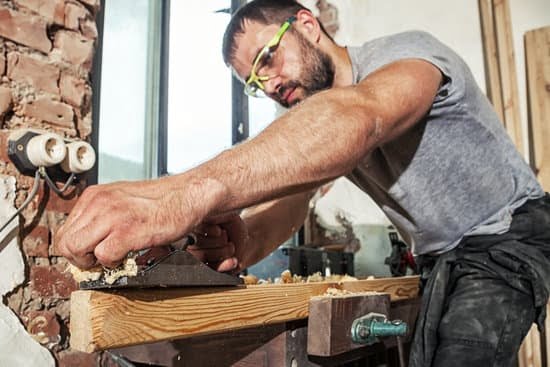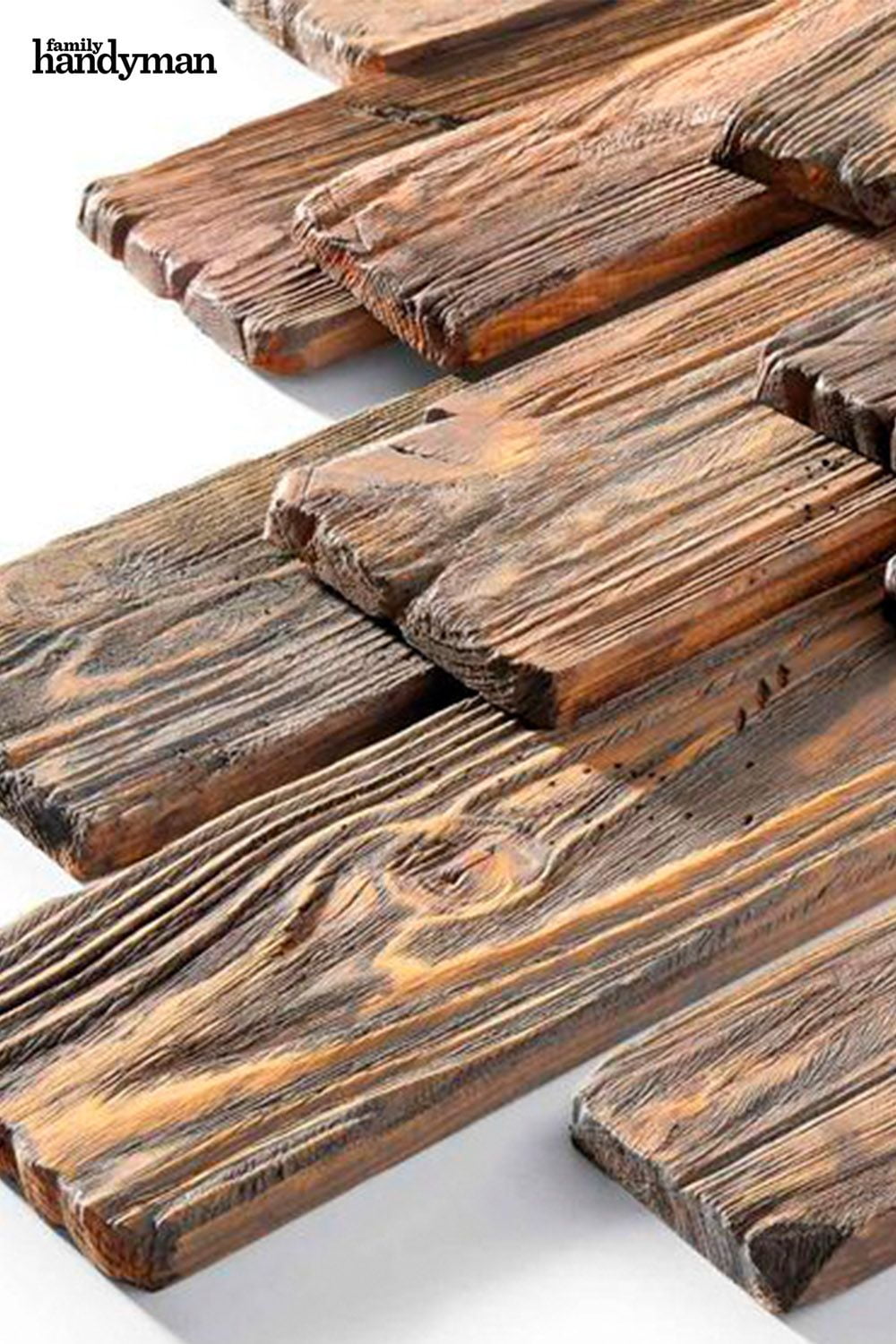A woodworking bench is a vital tool for any woodworker, providing a stable and versatile work surface to carry out various tasks. One of the intriguing aspects of a woodworking bench are the holes that are often found scattered across its surface. These holes, which may appear random or purposeful, have a significant role to play in enhancing the functionality and efficiency of a workbench.
The history of woodworking benches reveals that these holes have been present for centuries, with their origin dating back to ancient civilizations. While their precise purpose may differ slightly across cultures and time periods, their consistent presence suggests that they serve an important function in the craft of woodworking.
Understanding the significance of these mysterious holes is crucial for any passionate woodworker. In this article, we will explore the history of woodworking benches to trace the origin of these holes. We will also delve into the practical purposes and benefits they offer in enhancing woodworking projects. Additionally, we will examine different types of holes found in woodworking benches, as well as traditional and modern methods used to create them.
By gaining insights into the significance and versatility of these holes, woodworkers can maximize their use in various projects while also learning how to maintain them effectively. Whether you are a seasoned craftsman or just starting your journey in woodworking, this comprehensive guide will provide you with valuable tips and insights on utilizing these holes effectively on your woodworking bench.
History of woodworking benches
Woodworking benches have been an essential tool for craftsmen for centuries, providing a stable and sturdy surface to work on. Throughout history, these benches have evolved to include various features, including the mysterious holes that are found in many woodworking benches today. In this section, we will delve into the fascinating history of woodworking benches and trace the origin of these holes.
The use of woodworking benches dates back to ancient civilizations such as Egypt and Greece. These early benches were often simple in design, consisting of a wooden top supported by four legs. Over time, craftsmen began incorporating additional features into their benches to improve functionality. It is believed that the holes in woodworking benches originated from the need to secure workpieces during various woodworking tasks.
One of the earliest documented uses of holes in woodworking benches can be traced back to medieval Europe. During this period, craftsmen needed a way to hold their work securely in place while they carved or shaped it with hand tools such as chisels and saws.
They started creating holes in their benches and using accessories such as pegs or holdfasts to clamp down their workpieces. This allowed them to exert force without worrying about slippage or movement, enabling more precise and controlled woodworking.
As time went on, different types and arrangements of holes were developed based on specific needs and preferences. The most common type of hole found in woodworking benches is the round dog hole, which provides a versatile anchoring point that can be used with various clamping devices. Other types include square bench dogs or bench stops that fit into rectangular mortises in the benchtop.
Overall, the evolution of woodworking bench design has been closely tied to improving functionality and increasing efficiency for woodworkers. The incorporation of holes into these benches has played a crucial role in achieving this goal. In the next section, we will explore the importance of holes in a woodworking bench further and discuss their practical purposes and benefits.
Importance of holes in a woodworking bench: Discussing the practical purposes and benefits
- Securely hold workpieces: The primary purpose of the holes in a woodworking bench is to securely hold workpieces in place during various tasks. By inserting clamps or other accessories into these holes, craftsmen can prevent slippage and movement while they work on their projects. This allows for greater control and precision, resulting in better quality woodworking.
- Versatility in clamping options: The presence of holes in a woodworking bench provides woodworkers with a wide range of clamping options. By using different types of clamps, pegs, or bench dogs, woodworkers can adapt their benches to accommodate various workpieces with different shapes, sizes, and requirements. This versatility ensures that the bench remains a valuable tool for a wide range of woodworking projects.
- Facilitate the use of jigs and fixtures: The holes in a woodworking bench also serve as anchor points for jigs and fixtures. These devices help woodworkers perform repetitive tasks or complex cuts with ease and consistency. By attaching jigs to the bench through the holes, woodworkers can ensure stability and accuracy throughout the entire process.
The incorporation of holes into woodworking benches has revolutionized the efficiency and effectiveness of woodworking. In the next section, we will explore the different types of holes found in woodworking benches and how they contribute to their functionality.
Importance of holes in a woodworking bench
Woodworking benches are not just a flat surface to work on; they are meticulously designed with holes that serve various practical purposes and offer numerous benefits. These holes, often referred to as dog holes or holdfast holes, play a crucial role in enhancing the functionality and versatility of a woodworking bench.
One of the primary purposes of these holes is to provide a means for securing workpieces firmly in place during the woodworking process. Woodworkers can use different types of bench dogs, holdfasts, or other clamping devices to secure their workpiece in the desired position. By inserting these tools into the holes, woodworkers can ensure stability and precision when performing tasks such as sawing, planing, chiseling, and sanding.
Moreover, the holes also facilitate efficient dust and debris management during woodworking activities. By incorporating a woodworking vise or using clamps through the dog holes, woodworkers can easily attach a dust collection system. This helps to keep the work area clean and free from sawdust or wood chips that may obstruct the accuracy of cuts or damage tools over time.
The benefits of having holes in a woodworking bench extend beyond clamping and dust extraction. These versatile features allow for easy integration with other tools and accessories commonly used in woodworking activities. For example, woodworkers can attach specialized jigs or fixtures by aligning them with specific hole patterns on the benchtop. This enables repeatable accuracy when performing intricate joinery techniques such as dovetailing or mortise and tenon joints.
| Size | Purpose |
|---|---|
| 3/4 inch | Perfect for accommodating holdfasts and bench dogs |
| 1/2 inch | Ideal for securing smaller workpieces and accessories |
| 1 inch | Suitable for attaching specialized jigs and fixtures |
Different types of holes
One of the fascinating aspects of woodworking benches is the multitude of holes found on their surface. These holes come in various sizes and arrangements, each serving a specific purpose in the world of woodworking. Understanding the different types of holes can help woodworkers optimize their workbench for maximum efficiency and convenience.
The first type of hole commonly found in woodworking benches is the dog hole. Dog holes are round or square openings that are strategically positioned across the surface of the bench. These holes are used in conjunction with bench dogs, which are cylindrical pegs or clamps that fit snugly into the dog holes.
By placing bench dogs into these holes, woodworkers can secure their workpiece firmly to prevent it from moving while they work on it. This allows for more precision and stability during tasks such as planing, sawing, or chiseling.
Another type of hole often found in woodworking benches is the holdfast hole. Holdfasts are versatile clamps that can be inserted into these holes to anchor the workpiece securely to the bench. What makes holdfasts unique is their ability to grip onto both thin and thick materials by adjusting their position within the hole. This versatility allows woodworkers to firmly secure various shapes and sizes of workpieces without needing additional clamps.
In addition to dog holes and holdfast holes, there may also be other specialized holes depending on the design of the workbench. Some benches may feature tool well holes, which are larger openings used for storing frequently used tools within easy reach. Tool well holes help keep essential tools organized and readily accessible during woodworking projects.
Woodworking benches may also have smaller accessory holes located near specific areas of operation, such as dowel pinning or mortise and tenon joints. These accessory or jig holes allow for precise positioning and alignment when using specialized tools or jigs that require accurate measurements.
Understanding the different types of holes in a woodworking bench is essential for utilizing them effectively. By utilizing the appropriate holes for each task, woodworkers can enhance their overall workflow and achieve better results in their woodworking projects.
Traditional methods of creating holes
Woodworking benches have a long and rich history, dating back centuries. The process of creating holes in woodworking benches has also evolved over time, with traditional methods being used in the past. These traditional techniques are still revered by many woodworkers today for their craftsmanship and precision.
One of the earliest methods of creating holes in woodworking benches was through the use of hand tools such as chisels and mallets. Woodworkers would carefully and meticulously carve out each hole, ensuring that they were straight, clean, and smooth. This required great skill and patience, as any mistakes could compromise the functionality and stability of the bench.
Another technique used to create holes in woodworking benches was drilling. Early woodworkers would use a manual hand drill to bore holes into the benchtop. This method allowed them to create smaller holes with specific diameters, which were often favored for different types of woodworking tasks. To achieve larger or deeper holes, woodworkers sometimes used an auger bit attached to a manual brace – a tool consisting of a U-shaped grip and a rotating shaft.
These traditional methods required expertise, practice, and attention to detail. Woodworkers took pride in their ability to skillfully create these essential design elements in their workbenches.
| Traditional Method | Description |
|---|---|
| Chisel and Mallet Carving | Hand carving using chisels and mallets to create holes. |
| Manual Hand Drilling | Boring smaller holes using a manual hand drill. |
| Auger Bit with Manual Brace | Using an auger bit attached to a manual brace for larger or deeper holes. |
Although these techniques may be considered time-consuming by modern standards, many traditional woodworkers still choose to employ them as a way to preserve the historical practices and create pieces of functional art. Furthermore, these methods have stood the test of time and continue to serve as a testament to the skill and craftsmanship of woodworkers throughout history.
Modern approaches to hole creation
Modern woodworking has introduced new methods and tools for creating holes in woodworking benches. These advancements have made the process more efficient and precise, allowing woodworkers to achieve their desired results with ease. In this section, we will explore the contemporary approaches used for hole creation in woodworking benches.
CNC Machines
One of the most notable innovations in hole creation is the use of Computer Numerical Control (CNC) machines. These automated devices can accurately drill holes of various sizes and depths into a woodworking bench. CNC machines offer greater precision and speed compared to traditional methods.
Woodworkers can program the machine with specific measurements and specifications, ensuring consistent and accurate results every time. This technology has revolutionized the woodworking industry, making hole creation faster, more precise, and accessible to both professionals and hobbyists.
Power Tools
Power tools such as drills and routers are commonly used in modern hole creation for woodworking benches. Electric drills allow woodworkers to easily create holes of different sizes by adjusting the drill bits accordingly. They provide a convenient and efficient way to carve out holes in a bench without excessive physical exertion.
Routers, on the other hand, excel at creating intricate patterns or designs within the holes. With various router attachments available, woodworkers can customize their holes to suit their specific needs or aesthetic preferences.
Hole Saws
Hole saws are specialized tools designed specifically for creating large-diameter holes in woodworking benches. This tool consists of a metal cylinder fitted with teeth around one end that cut through the wood as it rotates. Hole saws come in various sizes to accommodate different hole diameters.
They are typically attached to a power drill or drill press for controlled cutting action. Hole saws are particularly useful when creating larger-sized holes needed for specific projects or accommodating bench accessories such as vices or clamps.
With these modern approaches and tools available, woodworkers have a range of options for creating holes in their woodworking benches. Whether it’s using CNC machines for precise and automated drilling, power tools for efficient hole creation, or specialized tools like hole saws for larger diameters, these advancements have made the process more accessible and convenient. By embracing these modern techniques, woodworkers can enhance their craftsmanship and efficiency when working with their woodworking bench.
Creative uses of holes in woodworking benches
Woodworking benches are not just ordinary work surfaces; they are intricately designed tools that enable woodworkers to create masterpieces. Among the distinguishing features of a woodworking bench are the holes scattered across its surface. These holes may seem insignificant at first glance, but they actually serve a variety of practical purposes and offer countless possibilities for creative use.
Holdfasts and Clamps
One of the primary uses for the holes in a woodworking bench is to hold down materials securely during the various stages of a project. This is where holdfasts and clamps come into play.
Holdfasts are metal devices that fit snugly into the holes in the bench top and provide an anchor for securing pieces of wood, allowing craftsmen to work with precision and stability. These versatile tools can be adjusted to accommodate materials of different shapes and sizes, making them invaluable for tasks such as sawing, planing, and carving.
Similarly, clamps can be inserted into the holes in order to firmly grip larger stock or hold pieces together while glue dries. Whether it’s a bar clamp, C-clamp, or F-clamp, utilizing the holes in a woodworking bench for clamping provides stability and convenience, ensuring that projects are completed accurately and efficiently.
Bench Dogs
Another way in which woodworkers make use of the holes in their benches is by utilizing bench dogs. Bench dogs are wooden pegs that fit into designated holes on the surface of the bench top. These pegs can be adjusted up or down to secure lumber being worked on or act as stoppers for running stock through a tool like a table saw or router table.
Bench dogs not only prevent materials from slipping during operation but also serve as reference points for alignment when working on multiple pieces that need to match precisely. They allow woodworkers to create repetitive cuts or grooves with ease while maintaining accuracy throughout the process. The holes in the bench act as guides and support for these bench dogs, making them an essential feature that enhances the functionality and precision of woodworking benches.
Accessory Storage
Aside from being practical tools for woodworking techniques, the holes in a woodworking bench can also be used for storage and organization purposes. Tools like chisels or screwdrivers can be inserted into the holes when not in use, keeping them within easy reach and preventing clutter on the work surface. Hanging small containers or trays in the holes provides a convenient solution for storing nails, screws, or other small hardware needed during projects.
Moreover, some woodworkers take advantage of the holes to attach various attachments or vises that expand the capabilities of their benches. This allows for greater flexibility and efficiency since tools can be securely mounted at various positions along the bench top according to specific project requirements.
Tips and insights for utilizing the holes effectively
Woodworking bench holes may seem simple and straightforward, but they can greatly enhance your woodworking experience if utilized effectively. This section aims to provide practical advice and tips for optimizing the use of holes in a woodworking bench.
- Hole Placement: The placement of the holes on your woodworking bench is crucial for efficient work. Consider positioning them strategically so that they are easily accessible while you’re working. Having a mix of larger and smaller holes can also be beneficial, as this allows for versatility when clamping or securing various sizes of workpieces.
- Clamping Techniques: One of the primary purposes of holes in a woodworking bench is to provide a way to secure workpieces using clamps. When utilizing these holes, it’s essential to consider different clamping techniques depending on your project. For example, using multiple smaller clamps instead of one large clamp can distribute pressure more evenly across the workpiece, reducing the risk of warping or damaging delicate materials.
- Bench Dogs and Holdfasts: To further optimize the use of holes in your woodworking bench, consider incorporating bench dogs and holdfasts. Bench dogs are peg-like devices that fit into the bench’s holes and act as stops or supports to prevent your workpiece from moving during planing or sawing.
Holdfasts, on the other hand, are versatile clamping tools that can be inserted into any hole along your bench’s surface to secure odd-shaped or irregular pieces. - Custom Jigs and Accessories: Another way to utilize the holes effectively is by creating custom jigs and accessories specifically designed for your woodworking projects. By attaching specialized fixtures or devices to the bench’s holes, you can improve accuracy, efficiency, and safety in various tasks such as drilling, routing, or sanding.
- Organization and Storage: Lastly, to truly optimize the use of holes in a woodworking bench, it’s important to keep them organized and clear of debris. This will ensure that the holes remain functional and readily available for use. Consider utilizing magnetic strips or trays to store small tools, screws, or other accessories nearby the holes. Additionally, regularly cleaning out sawdust or other particles from the holes will prevent clogging and prolong their durability.
By following these practical advice and tips, you can maximize the potential of the holes in your woodworking bench. Remember that experimentation and customization are key to finding what works best for your specific projects. Take advantage of this versatile feature in your woodworking bench, and watch how it enhances your craftsmanship and overall woodworking experience.
Maintenance and care for the holes
When it comes to woodworking benches, proper maintenance and care of the holes is essential to ensure their longevity and functionality. This section will provide a guide on how to clean, protect, and maintain the holes in order to maximize their durability.
Firstly, it is important to regularly clean the holes in your woodworking bench. Sawdust, debris, or glue can accumulate in these holes over time and obstruct their use. To clean them effectively, you can use a small brush or compressed air to remove any loose particles. For more stubborn materials such as dried glue, a wooden dowel can be used to gently scrape away the residue.
To protect the holes from wear and tear, it is recommended to apply a coat of protective finish or sealant. This will help prevent moisture absorption or damage caused by repetitive heavy usage. Be sure to choose a finish that is compatible with your bench’s material (such as wood or metal) and follow the manufacturer’s instructions for application.
In addition to cleaning and protecting the holes, regular maintenance is necessary for their prolonged durability. Inspect the holes periodically for any signs of damage such as chipping or cracking. If any issues are detected, they should be promptly addressed through repair or replacement. It is also important to check for any looseness or instability in connection points between components of the bench that may affect the integrity of the holes.
Taking proper care of the holes ensures that they remain functional for various woodworking projects and tasks. By regularly cleaning, protecting with finishes/sealants appropriate for your bench’s material, and maintaining their structural integrity through inspections and repairs if needed, you can prolong the lifespan of these essential features in your woodworking bench.
Conclusion
In conclusion, the holes in a woodworking bench hold great significance and demonstrate versatility in the craft of woodworking. Throughout history, these holes have evolved from simple modifications to essential features of the bench. They serve a variety of practical purposes, including holding workpieces securely and providing support for tools and accessories.
The different types of holes found in woodworking benches offer flexibility and customization options for woodworkers. From small dog holes to larger holdfast or vice holes, each serves a specific function depending on the project at hand. Woodworkers can arrange these holes strategically to ensure maximum efficiency and convenience during their work.
While traditional methods involved carving holes by hand with chisels or augers, modern techniques have revolutionized hole creation in woodworking benches. Power tools such as drills allow for faster and more precise hole cutting, enabling woodworkers to save time without compromising quality.
Furthermore, woodworkers have embraced creative uses for these holes beyond their immediate practical functions. Holes can be used as clamping points or anchor points for jigs and fixtures, allowing for greater precision and control in projects. By utilizing the versatility of these holes creatively, woodworkers can achieve superior results.
To effectively utilize the holes in a woodworking bench, it is crucial to consider some key tips and insights. Proper spacing between holes ensures efficient usage of space while avoiding overcrowding. Additionally, regularly cleaning and protecting the holes from debris or moisture will help maintain their durability over time.
Frequently Asked Questions
What are the holes for on a portable workbench?
The holes on a portable workbench serve multiple purposes that enhance its versatility and functionality. One common use is for securing materials or objects in place when working on them.
By inserting clamps or vise grips into these holes, woodworkers or DIY enthusiasts can secure their workpieces firmly, allowing for more precision and stability during cutting, drilling, shaping, or assembling tasks. Additionally, these holes can also accommodate various accessories such as tool holders or attachments, enabling efficient storage and easy access to commonly used tools while working.
What are the holes in woodworking bench called?
The holes in a woodworking bench are typically referred to as dog holes. These cylindrical openings are strategically spaced along the surface of the benchtop and serve several important functions specific to woodworking tasks. Primarily, dog holes provide a means of clamping down workpieces securely using bench dogs – peg-like devices that fit snugly into the dog holes.
This method allows woodworkers to hold pieces in place during planing, sawing, chiseling, or other operations that require stability and control. Dog holes also facilitate the use of other accessories like holdfasts or stops that further assist in securing workpieces effectively.
Why do metal benches have holes?
Metal benches often feature holes due to their purpose of accommodating specialized clamps and fixtures used in metalworking processes. These holes provide a way for metalworkers to securely attach objects to the benchtop during tasks such as cutting, grinding, welding, or shaping metal components.
By aligning workpieces with these holes, metal benches allow craftsmen to achieve precise positioning and maintain stability while applying force or utilizing handheld tools without compromising safety. Additionally, similar to wooden benches, metal benches’ hole patterns may also support accessories tailored for specific metalworking requirements like jigs and fixtures designed for precise drilling or milling operations on larger workpieces.

Hi everyone! I’m a woodworker and blogger, and this is my woodworking blog. In my blog, I share tips and tricks for woodworkers of all skill levels, as well as project ideas that you can try yourself.





